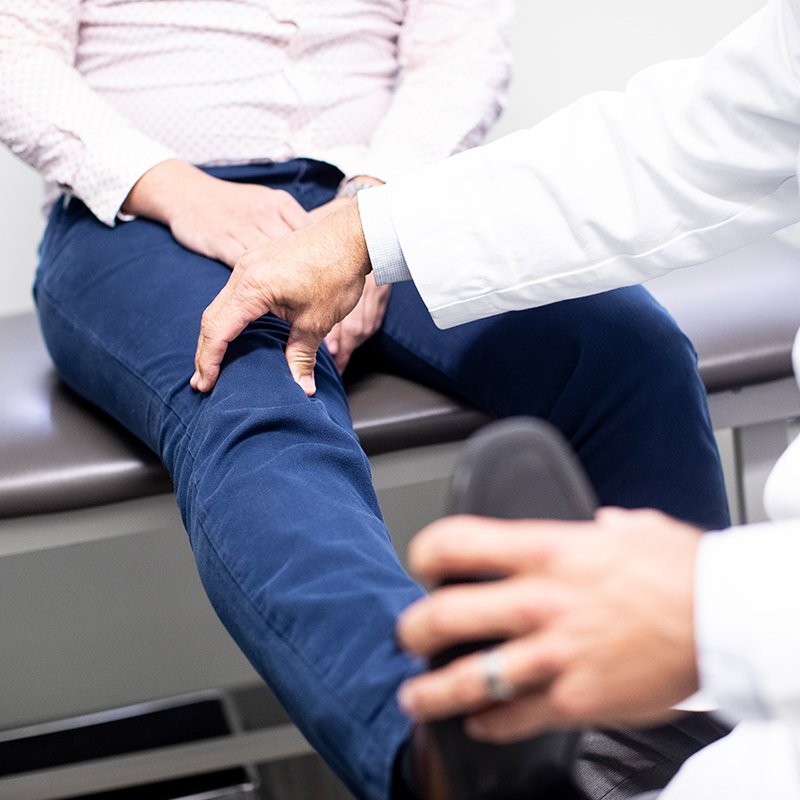Knee Replacement

Overview
What is a Knee Replacement?
Patients with knee pain who have tried nonsurgical treatments such as anti-inflammatory medications, physical therapy and activity modifications can find lasting relief through partial or total knee replacement. This procedure takes damaged cartilage and diseased bone spurs from the knee joint and replaces it with a prosthetic. The artificial joint restores range of motion and mobility, enabling many patients to return to their normal activities. Our Board-certified orthopedic surgeons are also experts at revision surgery for knee replacement that have failed due to complications. Knee replacement can be performed as either an inpatient procedure or on an outpatient basis. Your orthopedic surgeon will work with you to determine the best course of action for your recovery.
Why
Why Knee Replacement?
Degenerative conditions such as osteoarthritis can cause inflammation, joint damage and chronic pain. Even normal “wear and tear” over time can result in structural damage and make walking, sleeping, and getting in and out of a chair or car difficult. Our surgeons use innovative technologies and robotics to allow for preservation of muscles and skin around the knee, resulting in faster recovery times and minimal pain. Knee replacement is a viable option when other nonsurgical treatments have not provided lasting relief from pain.
Risks
Potential Risks and Complications
Over 600,000 people have a knee replacement every year, and complications are rare—less than 2 percent. Our surgical team prioritizes patient safety and implments the latest protocols for helping to ensure an optimal outcome. Complications may include:
- Infection
- Blood clots
- Joint stiffness
In addition, some people may have side effects related to anesthesia, including vomiting, dizziness, sore throat, aches and pains.
Prep
Preparing for Knee Replacement
Patients who are overweight or obese may be advised to lose weight prior to surgery. Muscle-strengthening leg exercises perfomed in the weeks prior to surgery can also help contribute to a better outcome. Tobacco users should quit smoking. Joint replacement classes are provided both on line and in person at Providence.

What to Expect
What to Expect
Before the procedure, your doctor will take x-ray images of your knee to locate the damaged cartilage within the joint. The results will determine which compartment of the knee to replace. Your multidisciplinary care team includes surgeons, nurses, anesthesiologists, physical therapists and occupational therapists.
Your surgery will be performed under regional or general anesthesia and will last approximately 90 minutes. During the procedure, the diseased portion of the knee is resurfaced and a prosthetic implant is then secured in the joint with bone cement. The result is a more natural-feeling, nearly pain-free gliding surface for your knee joint.
You will start physical therapy a few hourse after the procedure as rapid mobilization has been shown to reduce blood clots and enhance recovery.. We offer both same-day and next-day discharge to home. Your care team will ensure you have the right equipment, medications and clinical assistance to continue your recovery at home.
Upon discharge, your surgeon will give you a date for a follow-up appointment. You will also be prescribed a course of physical therapy to assist in your recovery. Our physical therapy programs help patients learn about the exercises that will help them recover and smoothly transition back to their daily routine.
Specialists
